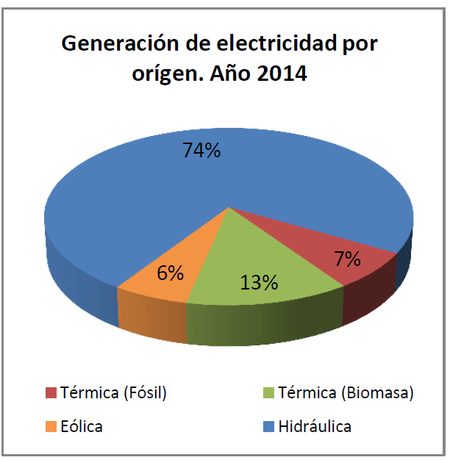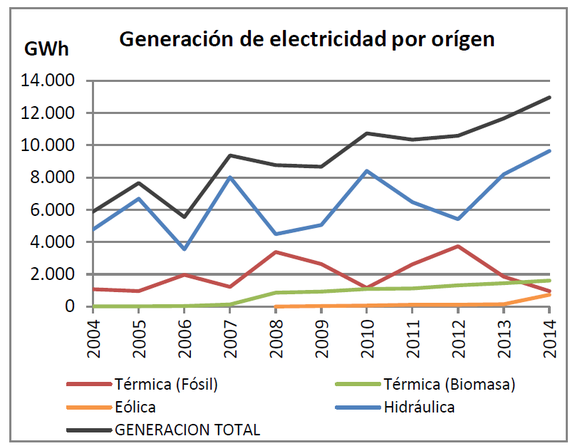 According to Wikipedia, in 2013, Uruguay had 10MW of wind power capacity out of a total electricity generating capacity of 2337MW. That's 0.4%. Fully 1538MW or 66% was hydro. It suggests wind as a percentage of generating capacity would hit 30% by 2016.
According to Wikipedia, in 2013, Uruguay had 10MW of wind power capacity out of a total electricity generating capacity of 2337MW. That's 0.4%. Fully 1538MW or 66% was hydro. It suggests wind as a percentage of generating capacity would hit 30% by 2016.
Six months ago, Bloomberg reported that wind capacity was due to hit 800MW this year.
But today, according Jonathan Watts in the Guardian, Uruguay has made a "dramatic shift to nearly 95% electricity from clean energy". The picture at the top of the article is, of course, of a wind turbine and we learn that:
Uruguay gets 94.5% of its electricity from renewables. In addition to old hydropower plants, a hefty investment in wind, biomass and solar in recent years has raised the share of these sources in the total energy mix to 55%, compared with a global average of 12%, and about 20% in Europe.
What a transformation they have wrought in the last 12 months!
I struggled to work out what has happened here - I wondered whether this it was just the environment journalist's traditional trick of using capacity figures but talking about generation (as favoured by Roger Harrabin). But even that ddidn't seem as if it would be big enough.
The answer turned up in the Uruguayan National Energy Balance document (in Spanish), which contained this graph:
 If you add up all but the red slice (Eolica, in orange, is wind power; the others should be decipherable), you seem to get pretty much the correct figure.
If you add up all but the red slice (Eolica, in orange, is wind power; the others should be decipherable), you seem to get pretty much the correct figure.
And next door to this graph was the one that explains this dramatic transformation in the energy landscape in Uruguay. Yes folks, it had rained a lot, so they were able to replace thermal generation with extra hydro.
God, the journalists at the Guardian are shameless.
